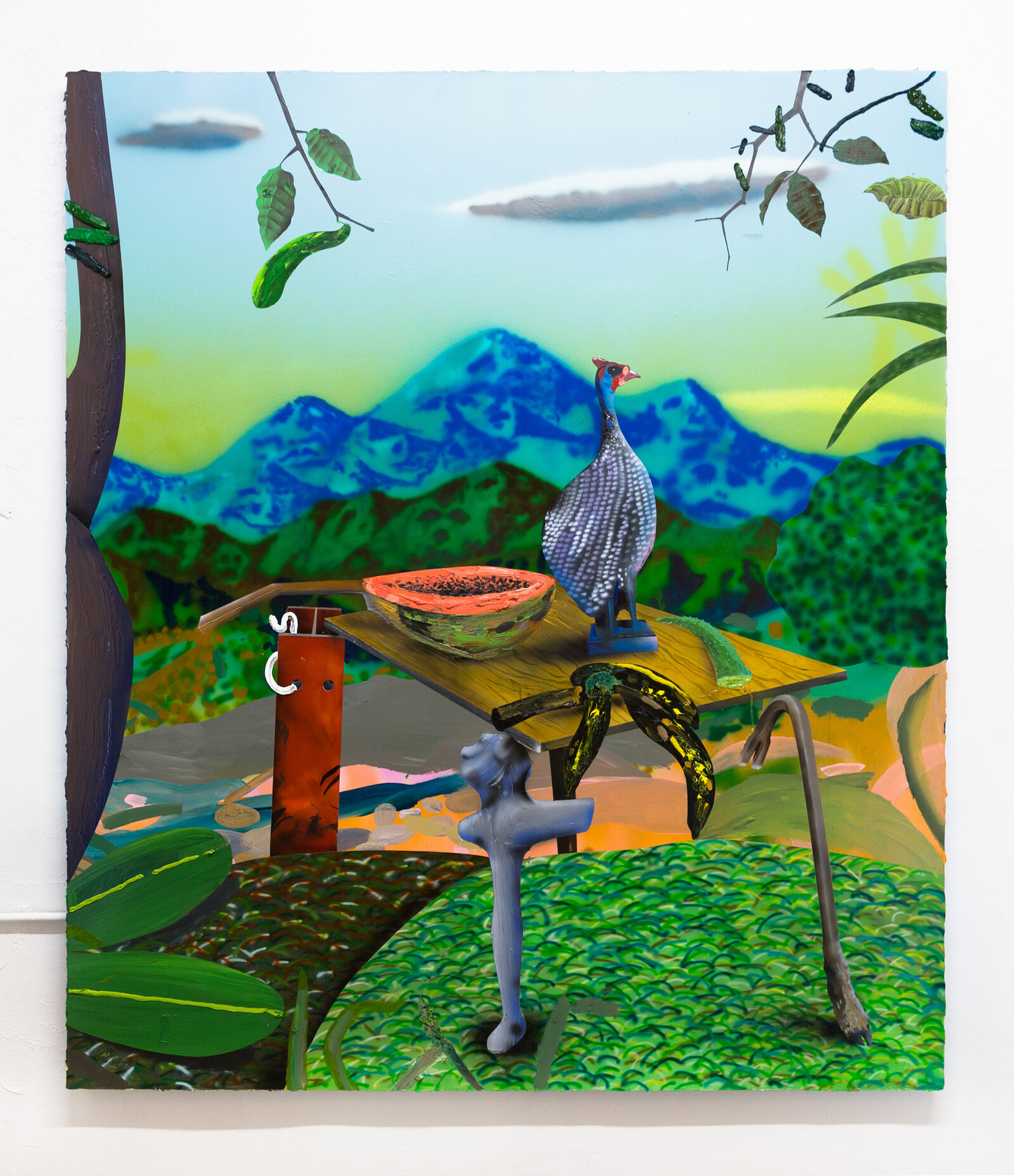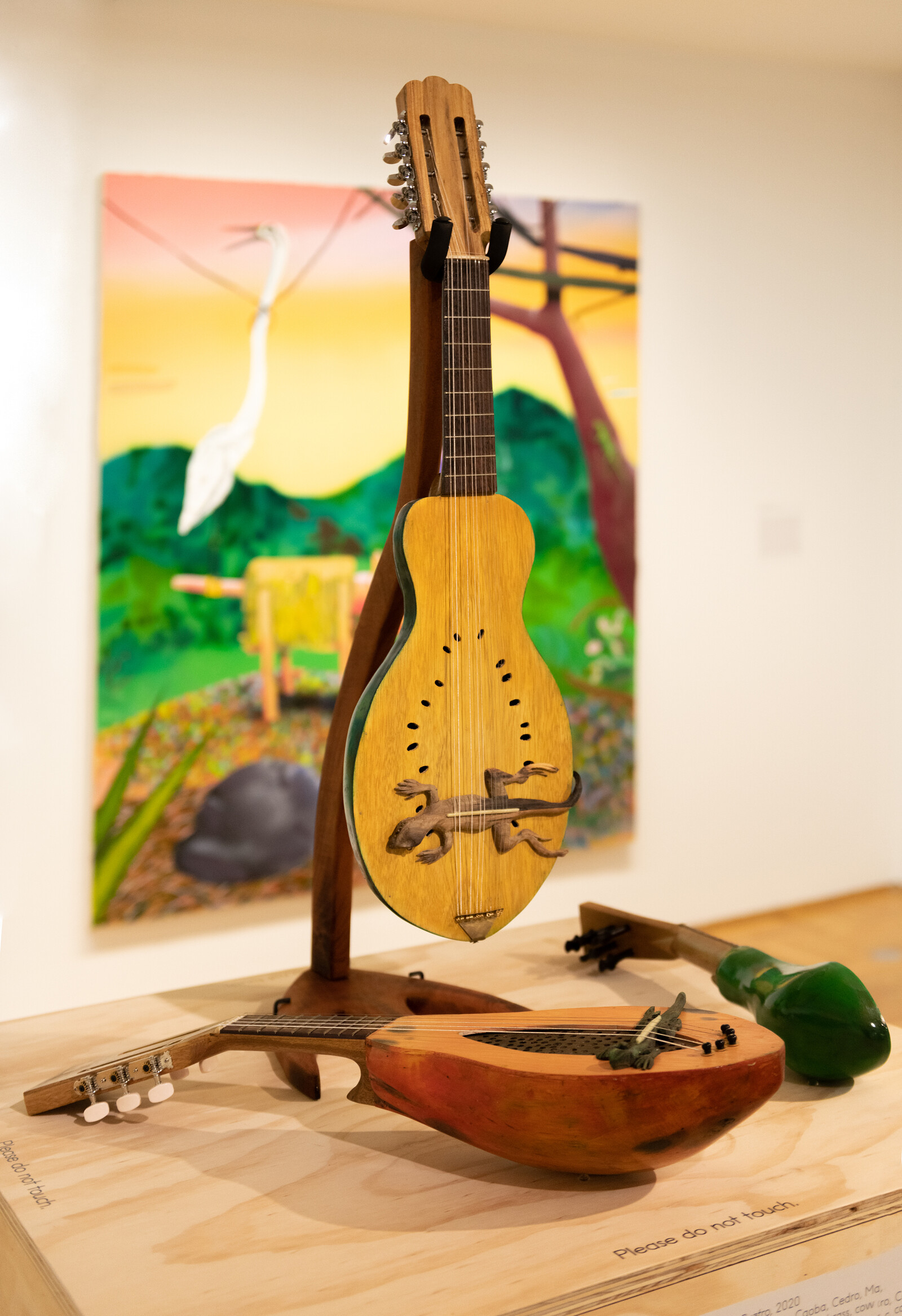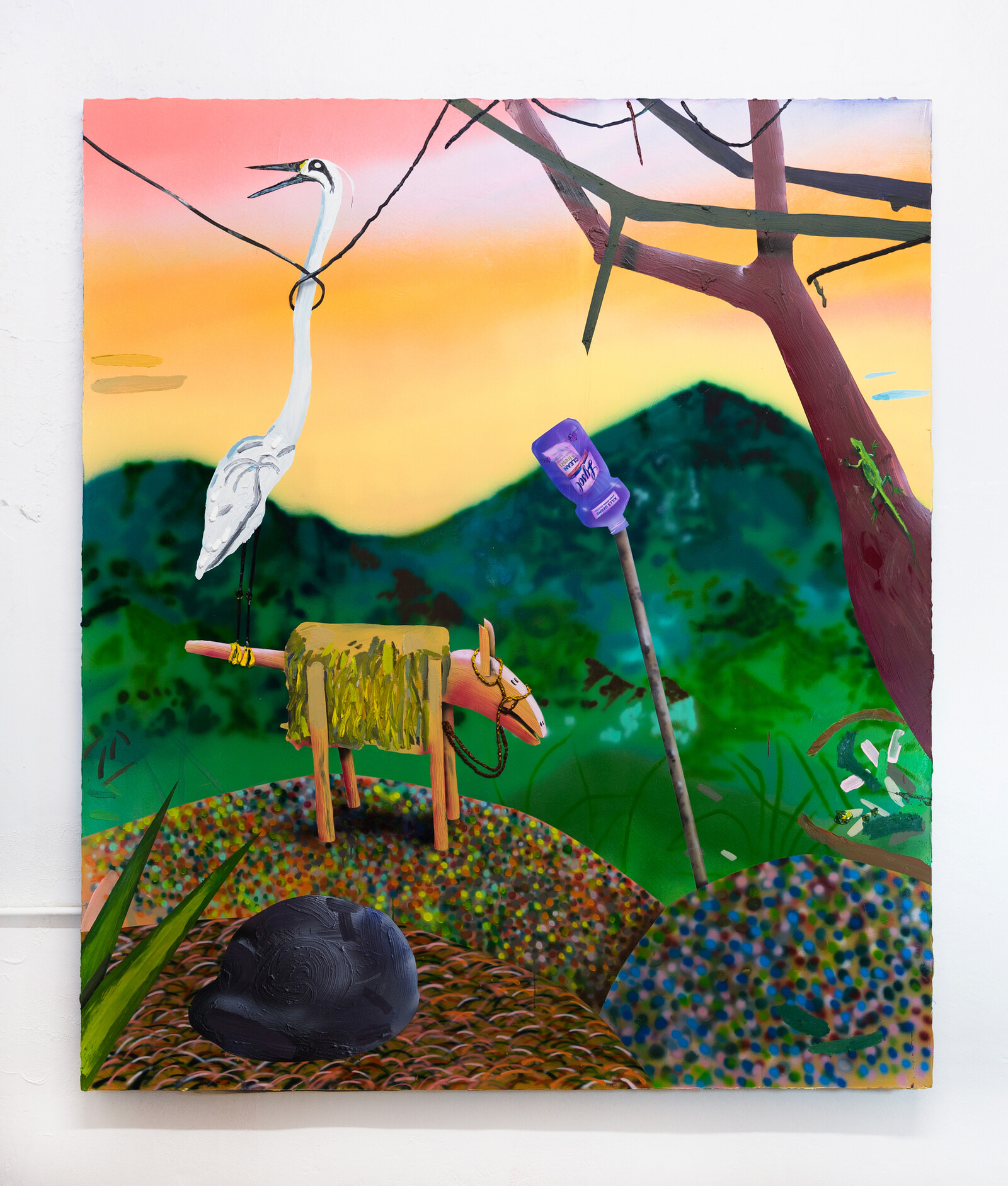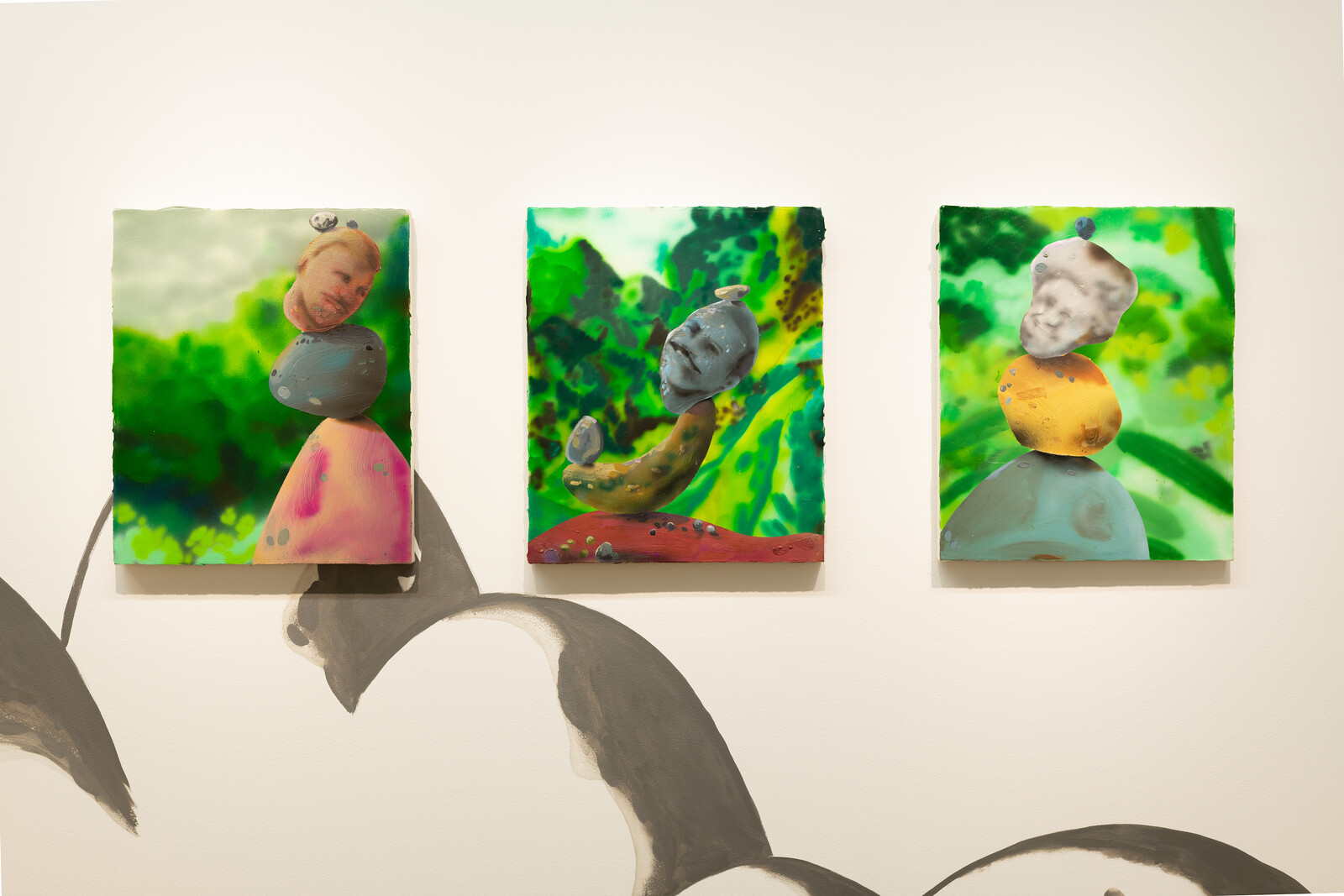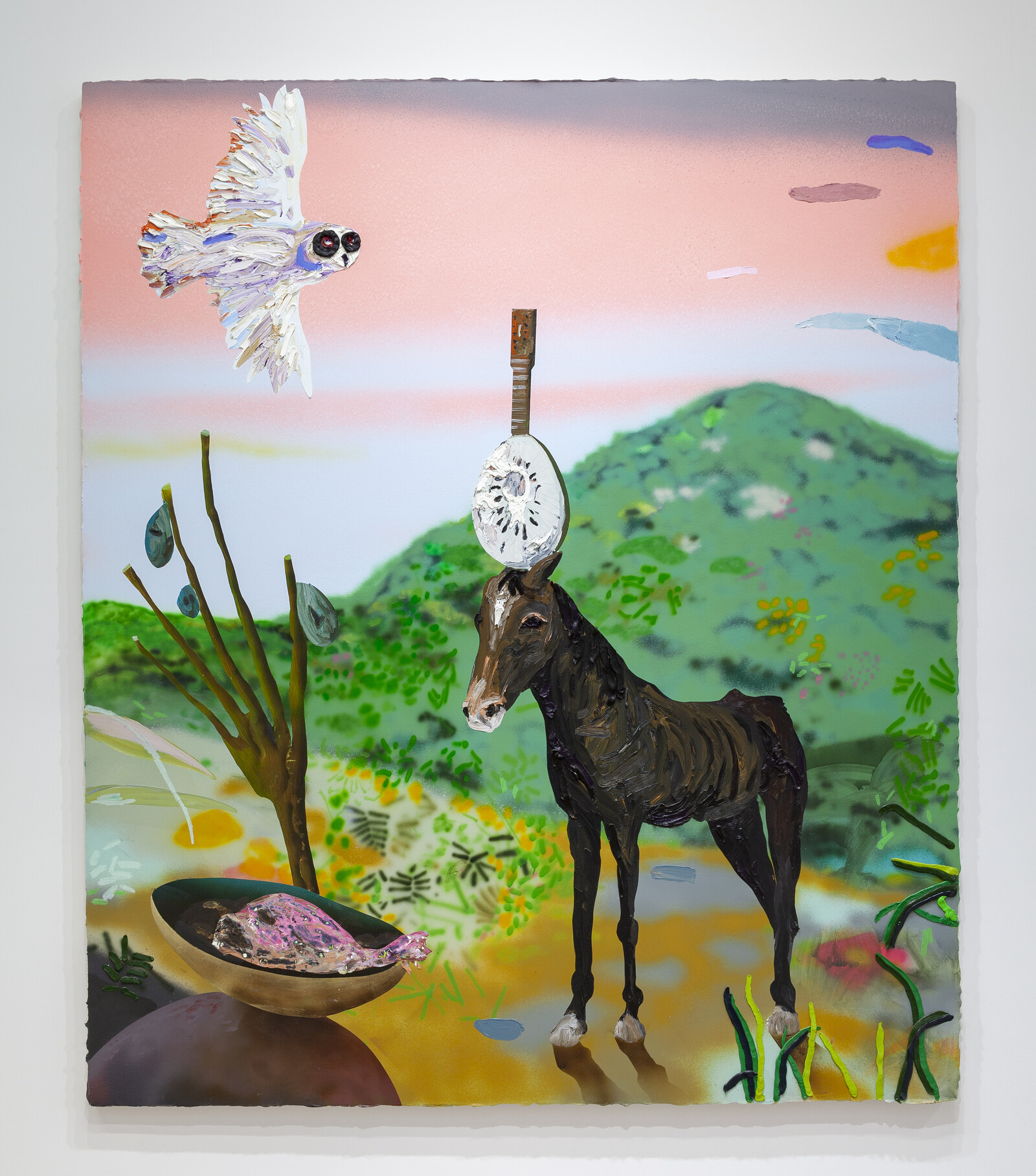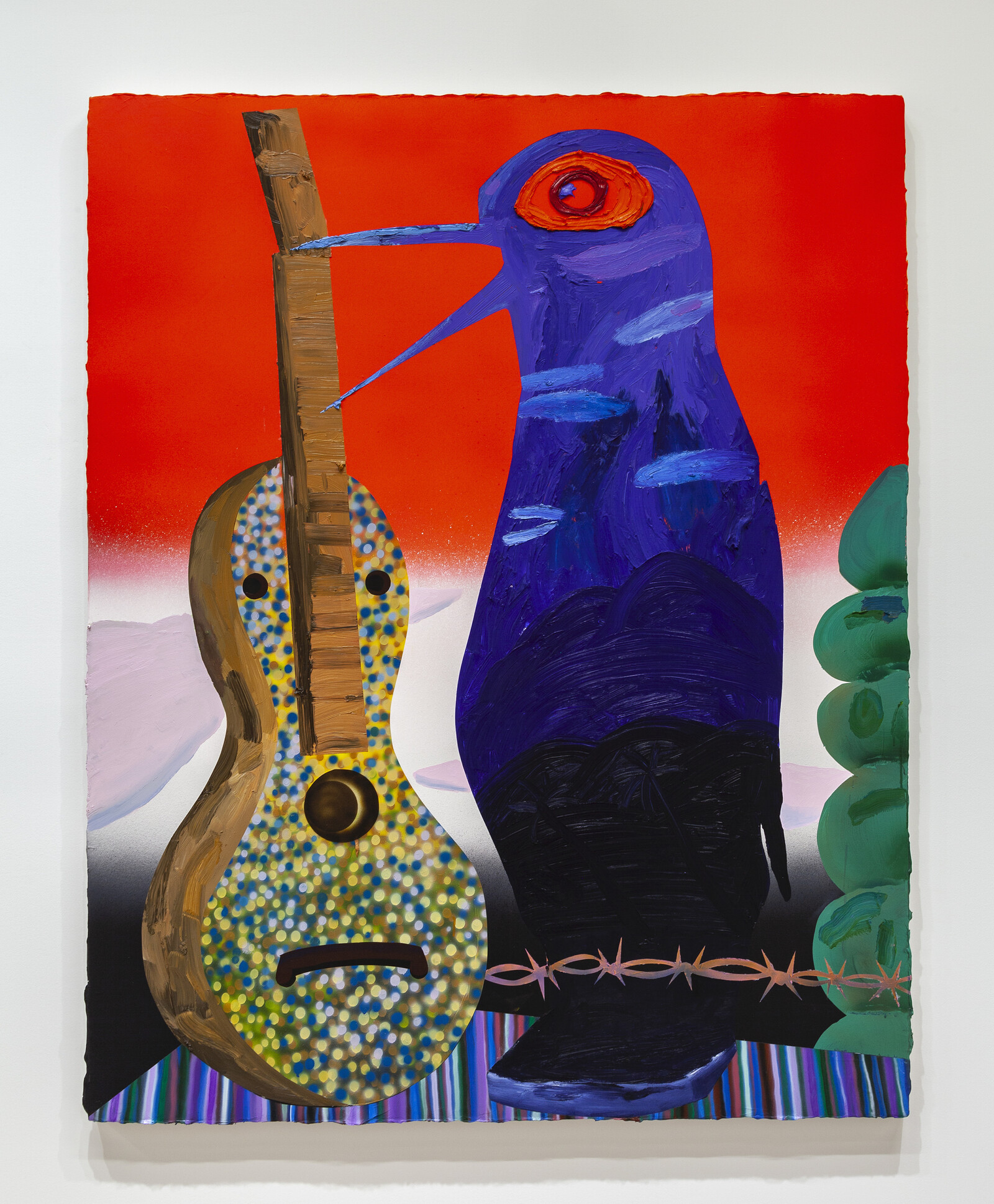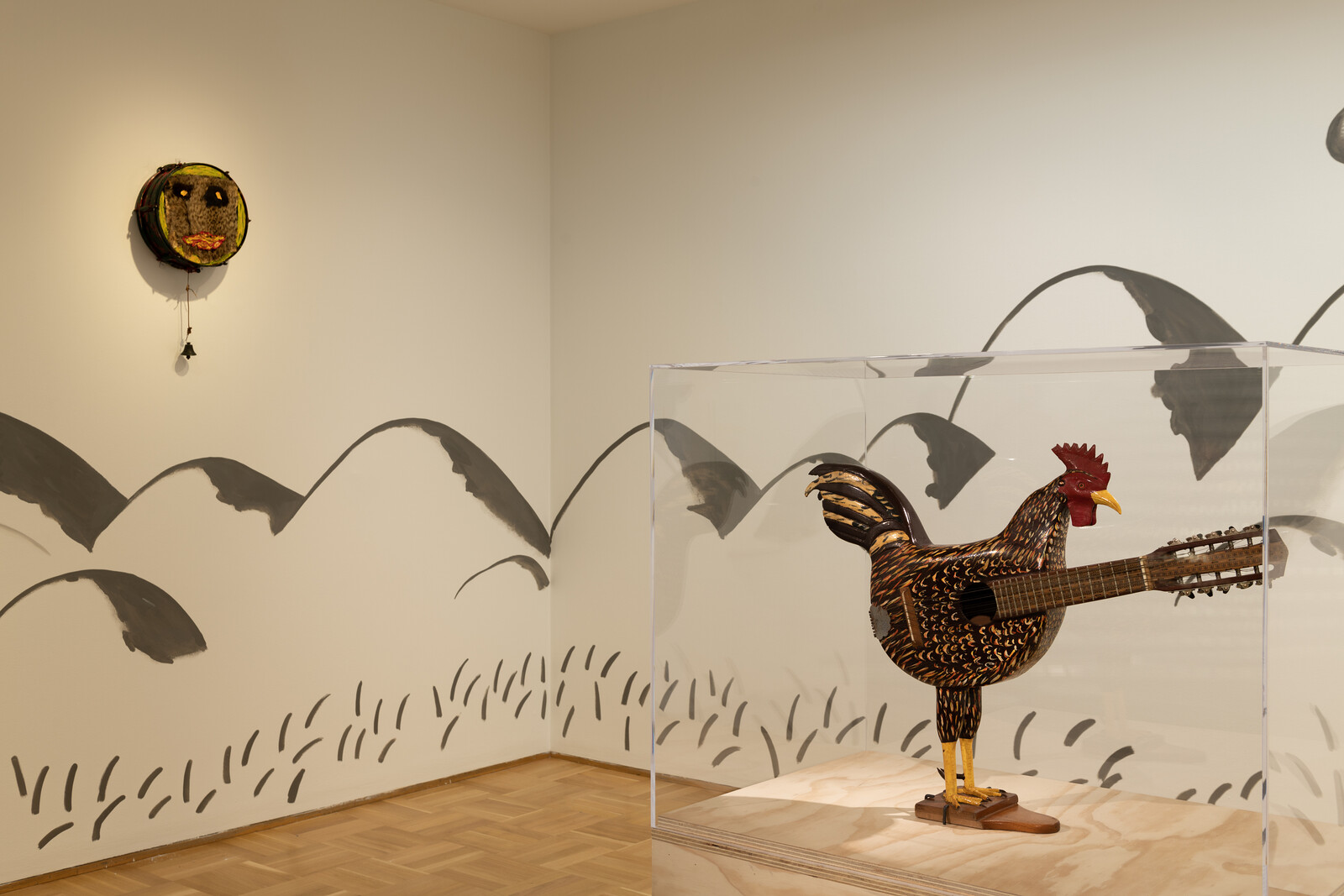At the center of artist and musician Omar Velázquez’s first solo museum presentation is a sequence of four landscape paintings. Evocative of eerie, enlarged postcards, they depict disquieting Puerto Rican pastoral scenes. In Baracutey (2020), the slender neck of a white heron is throttled by a loop of metal wire. The gasping bird stands upon a squat wooden pig; nearby, a green lizard scuttles up a slanting tree. Between is an emptied bottle of Lysol surface cleaner, propped like a pennant on a wooden stick driven into a hump of pointillist grass.
In An Eye for the Tropics (2006), her study of the role of photography in early twentieth-century marketing of Jamaica and the Bahamas to tourists, Krista A. Thompson discusses the complex processes of “tropicalization” by which the Caribbean was fashioned as a “paradise.” She describes how images, consumed in the context of a sightseeing culture that burgeoned with the decline of agricultural industries, became the “new sugar.”1 The art-historical tradition of the picturesque—reformatted to accent the exoticism of the tropics, as perceived from an imperial viewpoint—informed this development. This imported European aesthetic shaped landscaping conventions and racialized island terrains.
By probing this lineage, Velázquez’s paintings connect contemporary patterns of tourism to colonial forms of visuality. Each is composed upon a radiant, gradated acrylic airbrush background. Figures and forms are layered on top of this, with viscous slugs of impasto heightening the paintings’ sense of depth—an oozing plasticity that signals nature’s social construction. In Maboya (2020), a roasted pig’s head is impaled on a wooden fencepost. A snowy múcaro owl perches on top, its round, red eyes staring towards the viewer. Two strings of cobwebbed barbed wire dissect the composition, a discarded blue surgical mask hanging from the lower cable. Faces are visible in the background’s undulating green hills, referencing the Taíno belief that gods abide in the mountains.
An unpainted plywood plinth in the center of one gallery bears three handmade stringed instruments in the style of the cuatro and tiple, which descend from the guitarrillos brought to Puerto Rico by Spanish settlers in the sixteenth century. One resembles an avocado. Another features a gecko crawling upon its front. Speakers in an adjacent foyer play a soundtrack of Jíbaro music, a folk genre associated with subsistence farmers of the island’s highland communities. In this context, the music’s dazzling, lively tempo and enchanting lyrics ambiguously signify both touristy sweetness and rustic conviviality.
On a plinth in the foyer is Cuatro Gallo (1970), a cuatro modeled as a rooster by the self-taught Puerto Rican artist and musician Carmelo Martel Luciano, who died in 1990. The expressive sculpture, decorated with remarkable feathered brushwork, asserts the intimate relation of the Jíbaro peasant, a figure often romanticized in art and literature, to the earth. Nearby is a small wall sculpture—an amusing portrait depicting Charles Darwin as a Fuegian ceremonial mask—by the Puerto Rican surrealist Rafael Ferrer. Velázquez’s inclusion of these works emphasizes the intergenerational dialogue that underlies the exhibition.
Through these pluralistic means, the exhibition addresses the importance of heritage in Puerto Rican art. The landscape and Jíbaro traditions each derive from forms that came to the island during Spanish conquest. Local artists mastered and transformed these, creating a hybridized and distinctly agrarian culture of their own. Velázquez honors this folk modernity, uplifting the richness of its sensuality and sociality within the normally hushed, orderly space of the museum.
By elevating rural practices while simultaneously advertising the menacing legacy of European representational conventions, the exhibition foregrounds the double bind of postcolonial cultural production: by rebelliously—and often ingeniously—declaring its aesthetic difference, art is paradoxically tied to colonial conditions. Velázquez pushes against this by leaving a critical formation of anticolonial possibility—namely, community—unseen.
No people are pictured in his paintings, which could be read as a gesture of protection from the tropicalizing eye. Similarly, instruments are displayed and recordings played, but the liveness of improvised, communal performance is left to the imagination. As vaccinated populations resume travel, tourist economies are pressured to compete for foreign dollars. Yet as theorists such as George Beckford have argued, this system fosters dependency and underdevelopment, and renders environments expendable.2 In his critique of this totalizing paradigm, Velázquez asserts a right to opacity, and intimates that listening to the land might point a course towards ecological repair.
Krista A. Thompson, An Eye for the Tropics: Tourism, Photography, and Framing the Caribbean Picturesque (Durham: Duke University Press, 2006), 23.
See George L. Beckford, Persistent Poverty: Underdevelopment in Plantation Economies of the Third World (Oxford: Oxford University Press, 1972).


